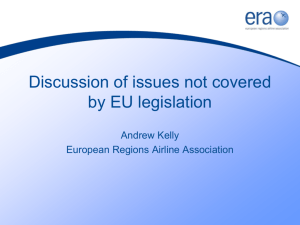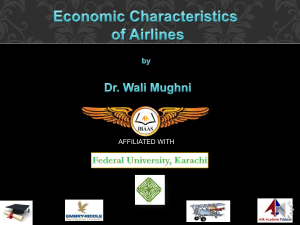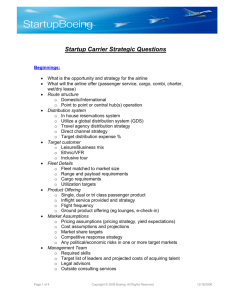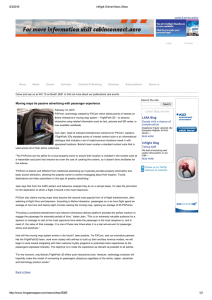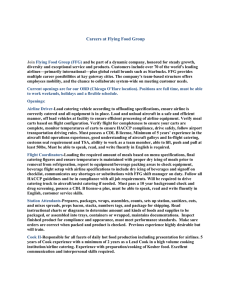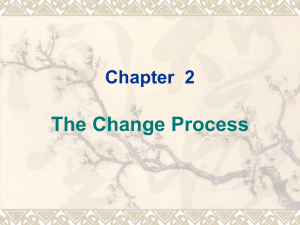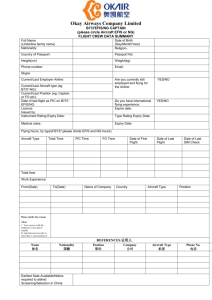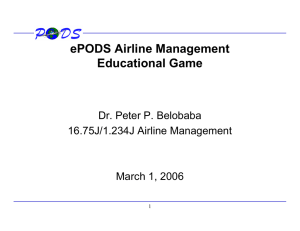Airline Cost Categorization - Center for Air Transportation Systems
advertisement
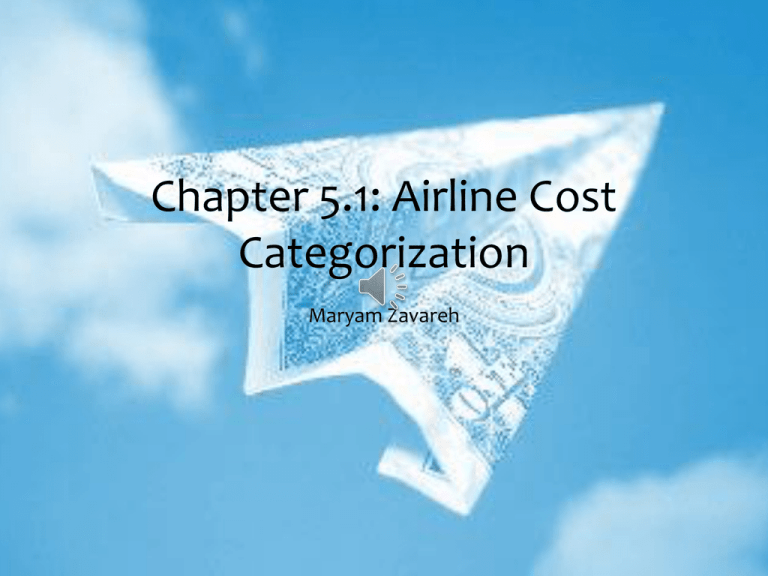
Chapter 5.1: Airline Cost Categorization Maryam Zavareh Introduction Source : DOT Form 41 Data base Traffic, financial and operating cost data reported to the DOT by US airlines Published Quarterly Detail of reporting differs for different expense categories (Example: AC Operating expense and other expenses based on AC type and region) Administrative vs. Functional Cost Categories 2 different Approaches for partitioning airline operation costs: Administrative Financial Accounting Statement Functional More detailed cost comparison across airlines and even across different aircraft types Administrative Cost Categories Salaries and related fringe benefits for all personnel (general management, flight personnel, maintenance labor, other personnel) Materials Purchased (fuel & oil, parts, passenger food, other materials) Administrative Cost Categories Services Purchased (advertising & promotions, communications, insurance, maintenance, commissions, other services) Landing Fees, Rentals, Depreciation, other Expenses Administrative Cost Allocation • Labors (Salaries) • Materials • Services Limitation of Administrative Cost Categorization Not much detailed analysis Difficult to separate out the components of salaries, materials and services that are explicitly associated with operating the aircraft, as opposed to ground operations. Functional Cost Categories allocates costs to the different functions within the airline’s operation Flight Operating Costs Ground Operating Costs System Operating Costs Flight Operating Costs Direct operating costs Flying operations – Flight crew, Fuel costs Maintenance – routine maintenance, extensive major checks, “labor & parts” Form 41 reports maintenance for direct airframe, direct engine and overhead/ burden Depreciation & Amortization – Capital costs of airline assets Ground Operating Costs Aircraft servicing – handling aircraft on ground, landing fees Traffic servicing – processing passengers, baggage and cargo at airports Promotion and sales – airline reservation centers, ticketing offices, travel agency commissions, and distribution system fees System Operating Costs Indirect operating costs Passenger Service – meals, flight attendants, in-flight services Advertising and Publicity General and Administrative – can’t be associated to a particular activity Transport-related – costs associated with the generation of transport related revenues. Fees paid to regional airline partners, extra baggage expense, and other miscellaneous overhead. Functional Cost Allocation ICAO Cost Categories In many respects similar in structure to both functional and allocation schemes used by airlines and government around the world Comparison Between ICAO and Form 41 Cost Categories Overall , the structure of the cost allocation scheme is very similar. Category ICAO Form 41 Maintenance Single Category: Maintenance and overhaul Three Categories: Direct Airframe Maintenance Direct Engine Maintenance Maintenance Burden Ticketing, Sale, Promotion Single Category: Ticketing, Sales and Promotion 2 Main Categories: Advertising Distribution Cost Cost Drives by Functional Categories Flight Operating Costs (FOC) Reported per block hour (correlated with the amount of time aircraft is being utilized) Aircraft Servicing Cost Reported per aircraft departure, including cleaning, fueling, marshaling Traffic Servicing Cost Reported per enplaned passenger, including the processing of passengers and their baggage Cost Drives by Functional Categories Passenger Service Cost Reported per revenue passenger kilometer (RPK) Promotion and Sales Costs Reported as a percentage of revenue, responsible for the generation of revenue Other Indirect and System Overhead Costs Reported as a percentage of total operating expenses Other Cost Category Comparison Total Operating Cost per Available Seat Mile (Unit Cost-CASM) Total Operating Expense per Passenger Enplaned or RPM Notes Thanks for Listening. Any Question? Go to http://catsr.ite.gmu.edu/ The Global Airline Industry Images were selected from various internet sites.

